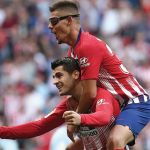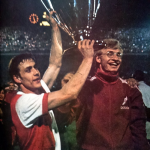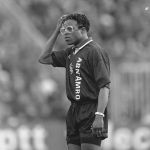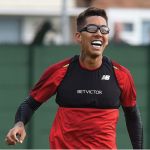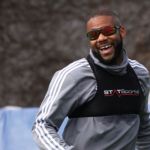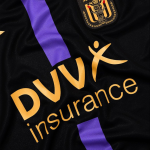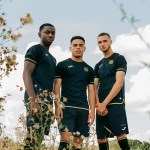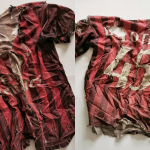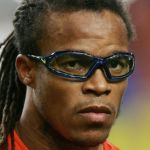
Playing football with glasses
The history of spectacles in the sport doesn't begin or end with Edgar Davids
April 26th, 2019
There are some different rituals that players make before entering the pitch: the music, the prayers, kissing the grass or looking up to the sky.
There are also some rules dictated by FIFA, that impose the footballers to do or not do certain things, such as the one that prevents wearing jewellery during a match. There is a particular ritual that is not enforced by FIFA: wearing glasses. In fact, is very difficult to see a player, but also a coach or a referee that wear them during a match.
In the history of football, however, there have been some players who brought them, making them part of the historical-aesthetic narrative of the sport. From the models not designed for sport worn at the 1936 Berlin Olympics to those designed by Nike for Edgar Davids, ergonomic and super-light, the glasses have been said to determine victories and helped great champions like Kakà or Firmino to not abandon the big stages.
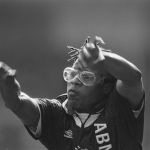
What FIFA says
The basic equipment of a football player is settled in the 4th regulation rule and it is made by 5 parts: a jersey or shirt, shorts, stockings, shinguards and footwear. For the extra pieces of equipment FIFA says:
"A player may use equipment other than the basic equipment provided that its sole purpose is to protect him physically and it poses no danger to him or any other player."
There is also a paragraph where is written: "In view of the new technology that has made sports spectacles much safer, both for the wearer and for other players, referees should show tolerance when authorizing their use, particularly for younger players."
So it is explicitly written that thanks to new materials, the necessity of using glasses must not be an obstacle for players, above all in the youngest. Light problems with sight could be corrected in adulthood, but there are some situations when doctors prescribe the use of glasses.
Plexiglass and impact resistant lenses, protective frames made of rubber, elastic band to fix glasses and anti-fog technologies that allow a view always clear. More and more modern and better, they still remain and equipment not so popular among players. But in the history of football, there were some players that made their glasses a protagonist.
Annibale Frossi
The football story of Annibale Frossi, is a unique story which started in Udine in the first years of the 20th century. When he first moved to Padova, his widowed mother called the police because her son, who was underaged, was defiant and needed to return to finish school. She wanted her son to became a doctor like his father, but Annibale was able to convince his mother who eventually allowed him to play football. External attack with a quick run, Gianni Brera said of him:
"he didn't have a good touch of the ball and he was not good in acrobatics because he needed to play with glasses"
In fact, he was inseparable from his pair of glasses, which at that time were a normal pair with round lenses. But this aspect did not stop him from scoring lucrative goals that brought Italy to win its first gold medal during the 1936 Olympics Games in Berlin. That summer he moved to Inter, where he won two Serie A and then became an observer. At the end of his career, after graduating in law, he then attempted to become a coach without success.
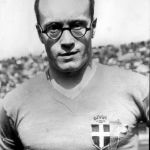
Intercontinental Cup
From as early as the 70s, a Belgian player wore glasses as a necessity: Jef Jurion suffered from myopia and for this, his use of the accessory was mandatory. He also wore them during the night of 26th September 1962 when Anderlecht, after drawing 3 to 3 at Santiago Bernabeu, managed to pass the preliminary stage of Champions League by winning by a goal scored by the Belgian striker, which made an exploit and eliminated from the competition players like Di Stefano, Puskas, Gento and other Blancos.

Some years later during the 70's, during the Intercontinental Cup Estudiantes and Feyenoord appeared another case. In the Dutch team, there were two players that wore glasses: Rinus Israel and Joop Van Daele, a young defender. It was the latter, who took the place of the legendary Coen Moulijn (left wing that has the biggest number of attendance with Feyenoord, 607), that scored the lucrative goal that permitted the Hollander to raise the cup. During the exultation after having scored the goal, Argentinian players tore off his glasses, crushing them on the ground and complaining that he was not authorized to use them during the match. A unique fact to which this event was honoured in the song “Het Brilletje van Van Daele” (The Van Daele glasses) and a story that will always remain in the history of the club.
Edgar Davids
When thinking of glasses in football, one of the first names that come to mind is Edgar Davids. The Pitbull , nicknamed because of his grit and for his yearning will of the win, hid behind his pair of black glasses which have been a unique signature pair that have helped to identify him all around the globe. But yet, he won one of his biggest trophies without wearing glasses: in 1996, after having won above all a Champions League with Ajax, he came to Italy wearing an A.C. Milan shirt. The next year a bad injury conjures doubt in his ability, but instead, he pointed out more for parties than the attendance on the pitch. He moved to Juventus where he came back as the talented player he was with Ajax: he played as a protagonist in the 1998 World Cup with Oranje but very soon the results of the black & white shirt became bad. At the beginning of the 2000-2001 season, glaucoma threatened to end his career: the therapy didn't work so he didn't have any other choice but surgery. For the next seasons, glasses were not necessary but Davids still wore them inside and outside the pitch: "I wear them because they give me security, even if they are not needed".
A lot of players had problems with sight and use contact lenses. I imagine that most of them, also because they are more comfortable, decided not to wear glasses because they don't want to portray a vulnerable image of themselves. Not because wearing them or not may affect something in itself, but it might be sure a sign that the sight is not naturally perfect and this aspect could make your opponent think that he has a pivot on which to pry. But Edgard Davids overcame this aspect: glasses not only became his signature on the pitch but also made him one of the most creative players in 90s and an icon of his sport.
The others
Ever since the sporting and stylistic success of Edgard Davids, every other player who wore glasses has been identified as "the new Davids". Despite the success of the Dutch player, glasses have never become popular among footballers and most players prefer contact lenses: from Kakà to John Terry, and also for Mario Balotelli, a lot of players have suffered from myopia during their career . But, for more serious problems with sight, sometimes contact lenses are not enough.
Ignazio Abate wore glasses during a friendly match between A.C. Milan and F.C. Lugano, after having being hit with a strong ball, and the same was for Roberto Firmino for a period during training. The West Ham defender Alex Song wears them because of an infection and has said that every time he had to fight for having a good view of the opponents has been while he using glasses. Andrew Farrel, who plays in MLS with the New England Revolution, has an opposite opinion: recently after a retinal detachment he must wear protective specatcles: "my mother said that I'm fine with it, and we have only two eyes so we must protect them" he declared.
Even the younger player of Atletico Madrid Javier Montero wears protective glasses while he playing football: he had a retinal detachment but this fact did not compromise his debut in a Champions League match.
It is not so common but there are a lot of players who wear on the pitch: they are the proof that sight problems are not an obstacle that prevents you from becoming a professional football player.
